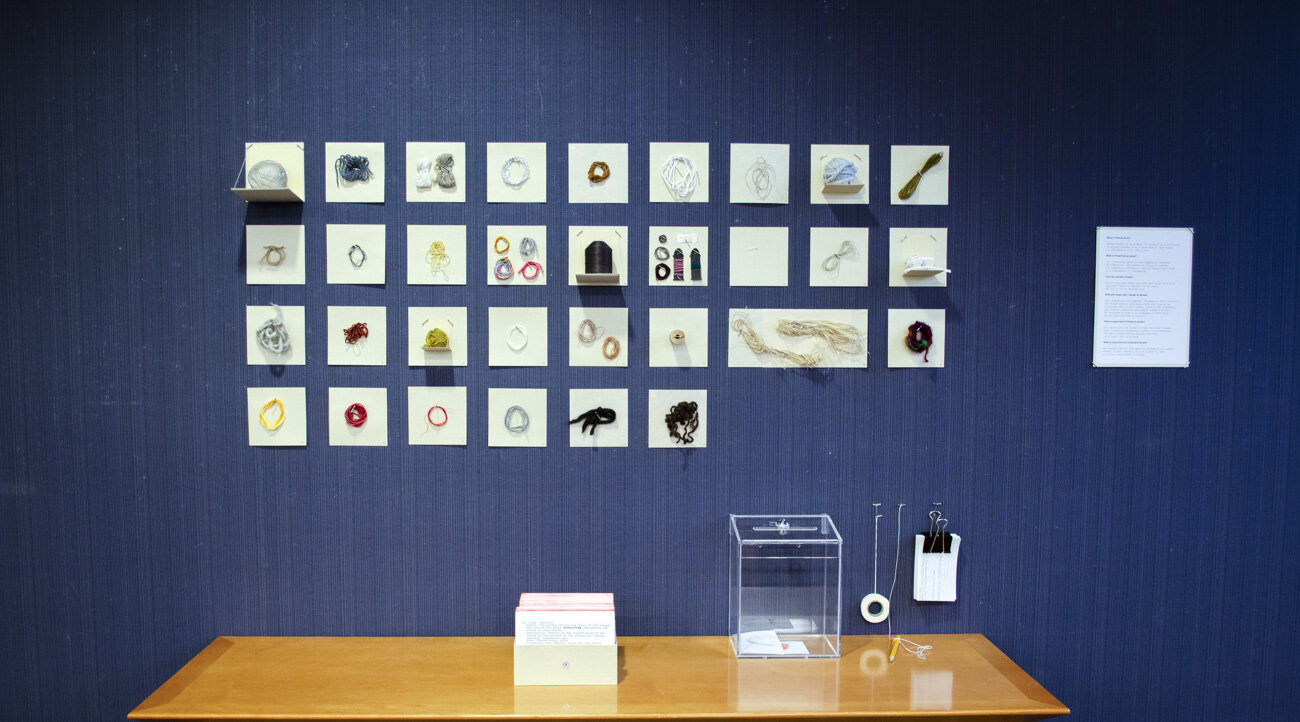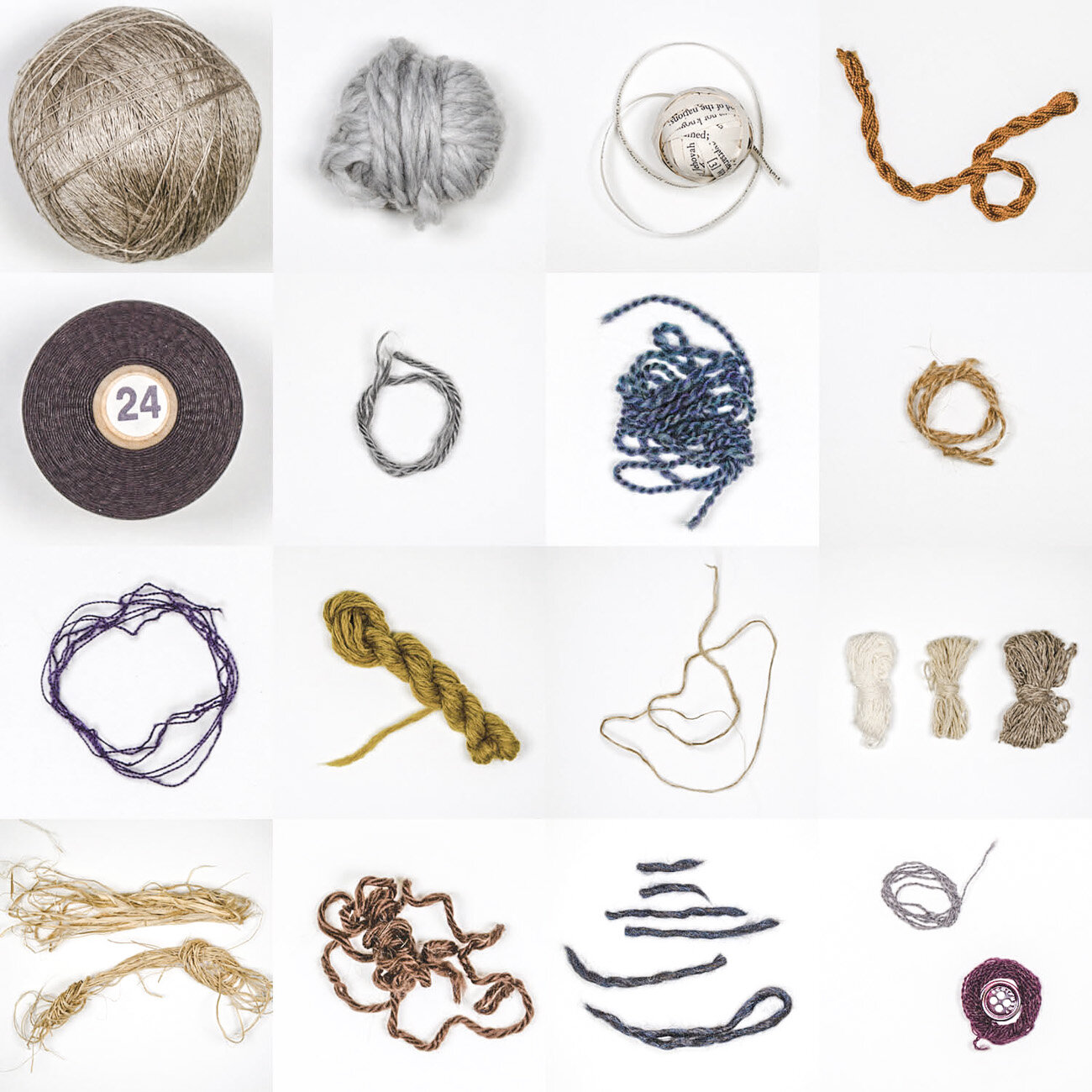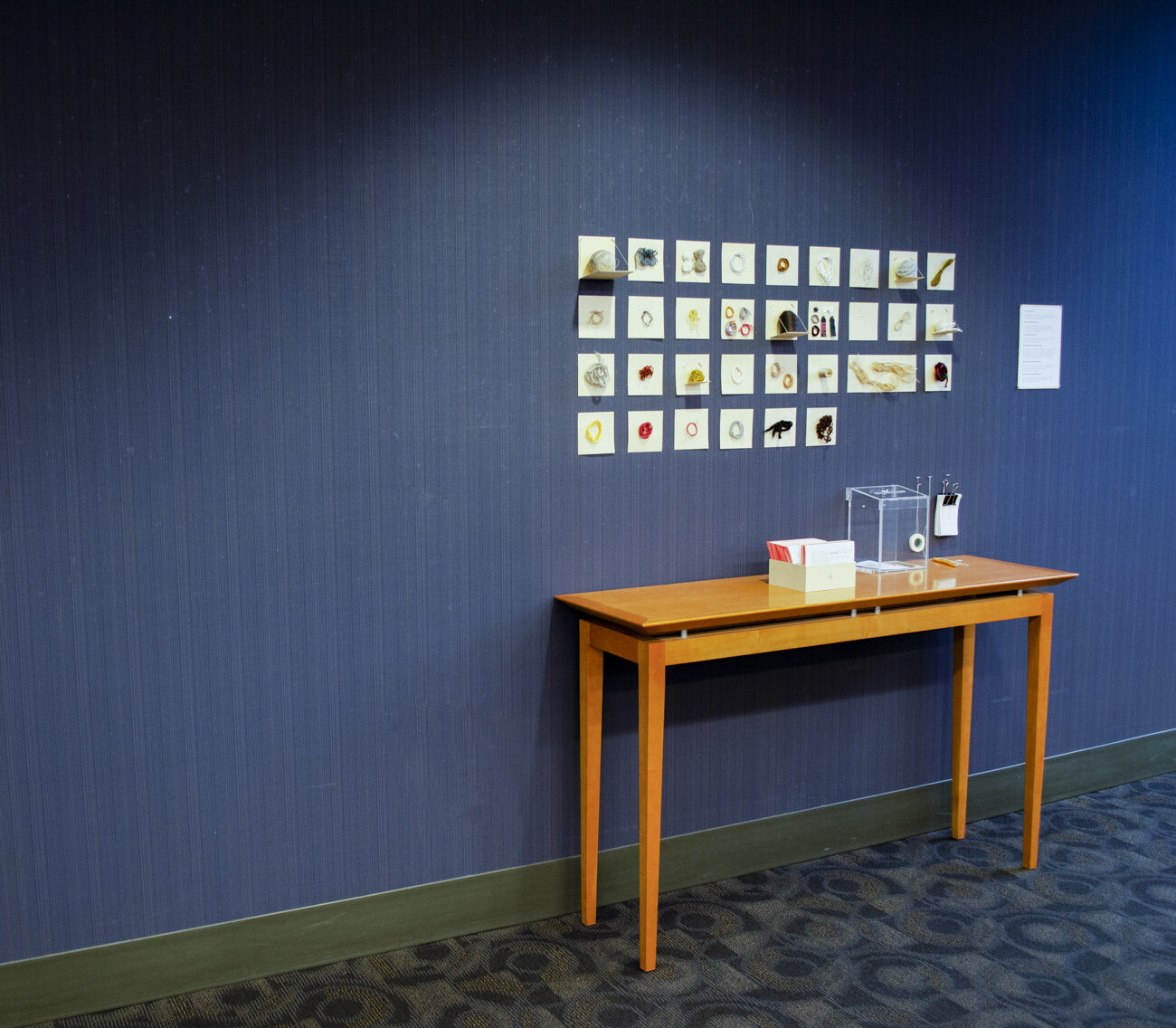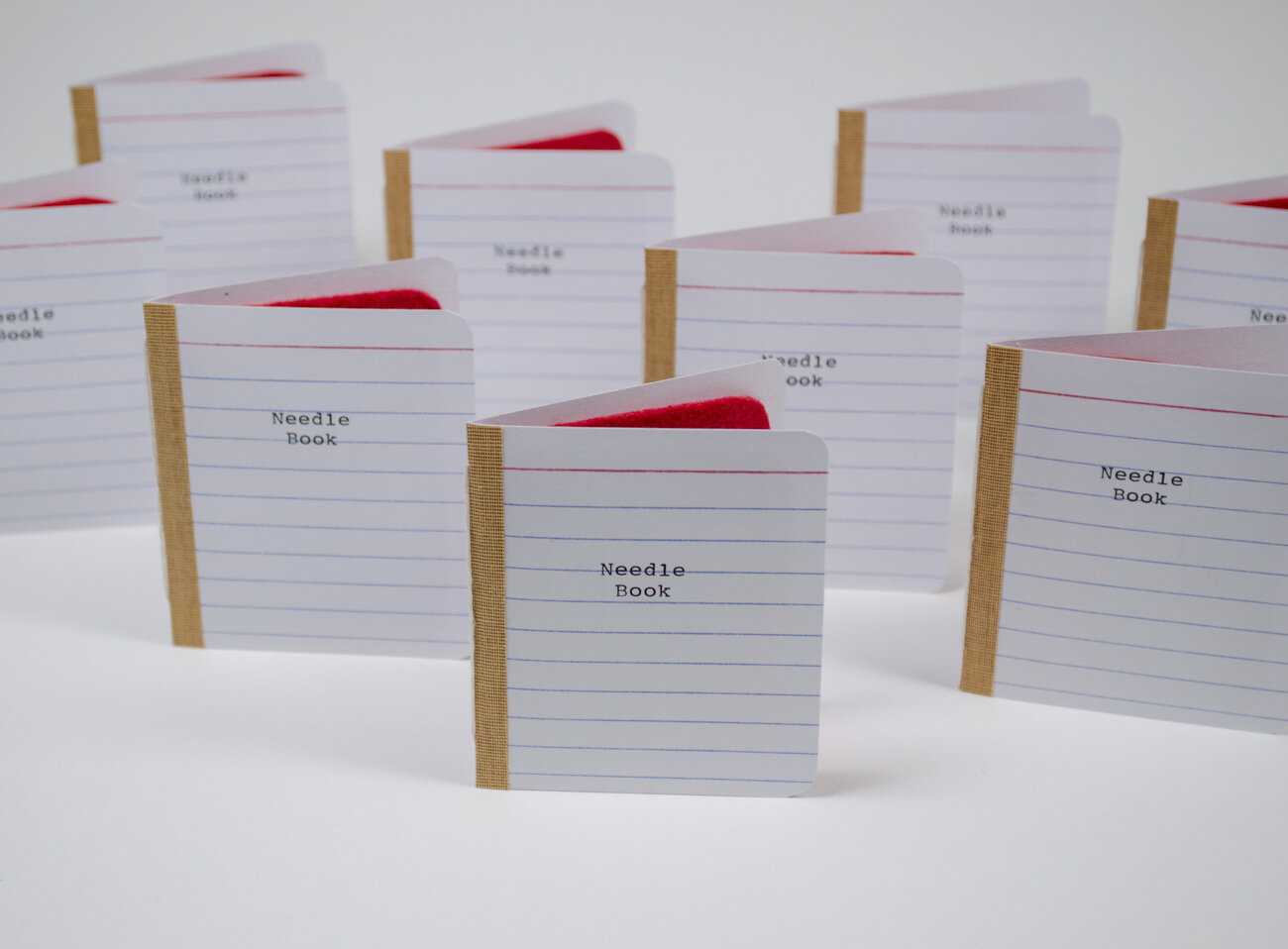Thread Library: An Argument for Art in the Stacks
Thread Library, Iowa City Public Library, February 2020
Thread Library: An Argument for Art in the Stacks
by India Johnson
The first piece I made for display in a library was a sculpture titled Negative Theology. To create the sculpture, I checked out a shelf of books about theology from the University of Iowa Main Library, ‘cast’ them in fabric, and returned the fabric casts to the shelves. The sculpture, which was installed without the library’s permission, remained for the checkout period of the books. To make Negative Theology required use of the library system. In this respect, it is like mail art, which requires use of the postal system.
Negative Theology, University of Iowa Main Library
As the poet, theorist, and book artist Ulises Carrión claims, the medium of mail art is “not only the material support of the artist’s messages, but also the complex mechanism (the postal system) that allows for the transmission of messages” (1).
Carrión further claims that “an archive can be an artwork” (2) But what is the medium of archives?
What is the medium of artwork-as-archive?
Thread Library, Iowa City Public Library, February 2020
In The Big Archive: Art from Bureaucracy, art historian Sven Spieker argues that “writing is the medium of archives” (3) because “archival order depends on the basis of language” (4).
Additionally, Spieker notes that “the English word “file,” which is derived from the French fil (string)” (5) references the filing systems of Early Modern Europe, in which letters, forms, and receipts were strung together on a thread and suspended. That is, when it comes to early modern files, thread is both a material for filing, and the method for organizing information.
Thread Library, an artwork I made for the Iowa City Public Library (ICPL) in February 2020, suggests that information is always mediated by the tactile, tangible, material, and personal. Simply put, Thread Library is a collection of thread with a card catalog, and each thread is cataloged as if it were a book. Installed on a back wall between the page station and a computer lab, ICPL patrons could browse the card catalog and handle the threads.
Installing an archive-as-artwork in a public library presented two main challenges: first, items could be easily stolen from the collection. In fact, several threads disappeared during the exhibition of the founding collection. Their catalog cards were subsequently updated with an “Item Missing” stamp.
The second challenge of installing artwork at a public library was the surface of the wall my local library designates for displays: it was damaged, and covered in blue fabric. To what extent might artwork created through the process of assemblage, or collecting, depend on a white cube gallery to formalize it for display?
Thread Library, Iowa City Public Library, February 2020
Despite such challenges, Thread Library insists on the public library as a gallery alternative. Installed in a gallery, art inhabits a space. Installed at your local library, art inhabits a place.
The main benefit of installing Thread Library at ICPL was that a fairly broad public could donate threads to the collection. As threads were donated, I cataloged each thread. Based on information provided by the donor, I assigned each thread a title, author, description, and subject headings. Although it reads as a work of visual art, Thread Library may best be understood as a creative writing project which appropriates the “form” of the card catalog for artistic ends. I aim for the catalog cards to feel as if they are written by someone in particular.
When I installed Thread Library’s founding collection at ICPL, I did not anticipate how quickly the piece would come to extend beyond its physical display. Although I arranged two donation points in Iowa City--besides the public library, thread could also be donated at a local fabric shop--what proved to be most popular with our “patrons” was donation by mail. I responded to all threads donated via post with a letter, some of which are documented above.
This correspondence also captures the performative aspect of Thread Library: during artist talks and class visits, I impersonate a special collections curator. The labor force at Thread Library includes a Head Curator, Exhibitions Prep staff, and an Outreach & Engagement Librarian. It happens that our various departments conform to their respective stereotypes--the Cataloging staff has a “backlog,” the Digitization staff is “still in training,” and the Outreach & Engagement Librarian is “happy to help you with your curriculum needs.” Unfortunately, like many libraries, Thread Library operates on a shoestring budget. We don’t have funds for “collections development,” so we operate solely on a “basis of donation.”
Whenever I present the piece publicly, a humorous juxtaposition emerges between this performance of librarianship, and the reality viewers know to be true: in actuality, Thread Library is operated by just one artist.
These performances, card catalog entries, and correspondence combine to form a ‘grammar’ for Thread Library. The formality of this ‘grammar of the archive’ contrasts with the sentimental and personal character of the thread collection. Ultimately, Thread Library claims that the nature of collecting is essentially subjective, even at the level of institutional collecting. The work suggests that materiality should be considered to be within the purview of “information.”
Finally, Thread Library argues that the public library is a habitat where contemporary art can thrive. As the poet, theorist, and book artist Ulises Carrión claimed, “I believe art as a practice has been superseded by a more complex, more rigorous and richer practice: culture. We’ve reached a privileged historical moment when keeping an archive can be an artwork.”
India Johnson is an artist and bookbinder. She holds an MFA from the University of Iowa Center for the Book. She has also studied at the Llotja Book Arts Conservatory. Additionally, her training includes benchwork in book conservation. She makes bookbindings, artist's books, and sculptural books, and writes translations, lexicography, and criticism related to bookbinding and book art.
Works cited:
+ Quant aux livres / On books, by Ulises Carrión
+ The Big Archive: Art from Bureaucracy, by Sven Spieker
Notes:
(1) Quant aux livres, page 160
(2) Quant aux livres, page 195
(3) The Big Archive: Art from Bureaucracy, page xii
(4) The Big Archive: Art from Bureaucracy, page 13
(5) The Big Archive: Art from Bureaucracy, page ix
(6) Quant aux livres, page 195













